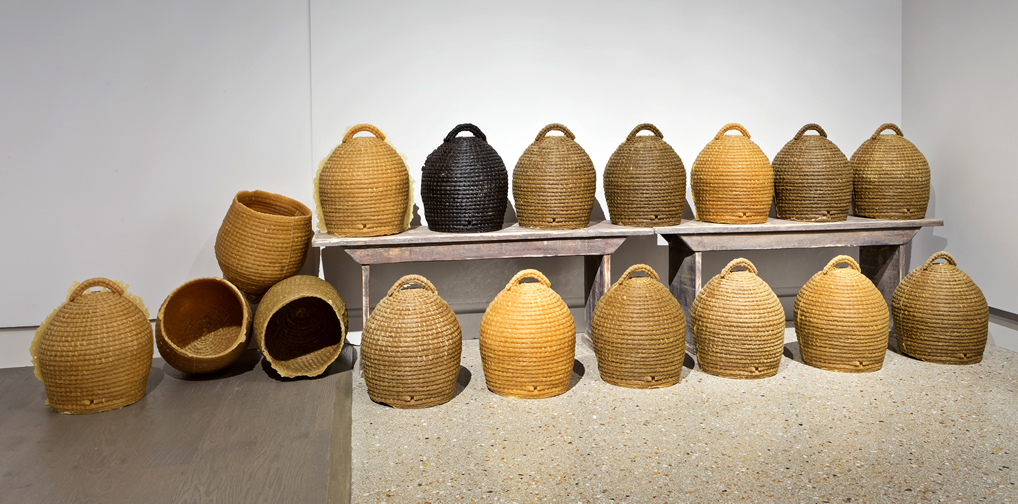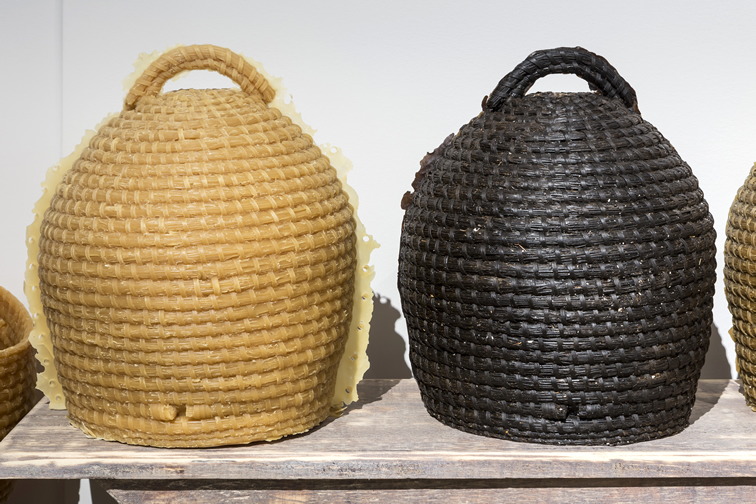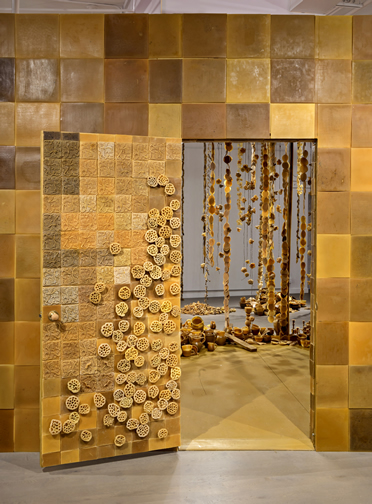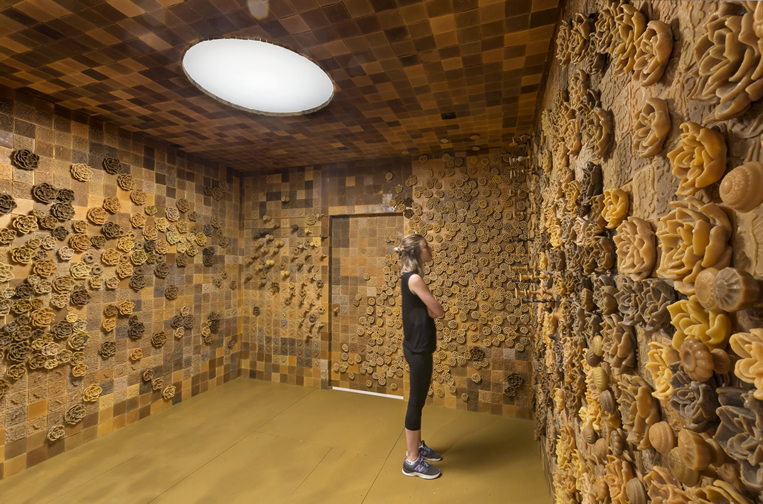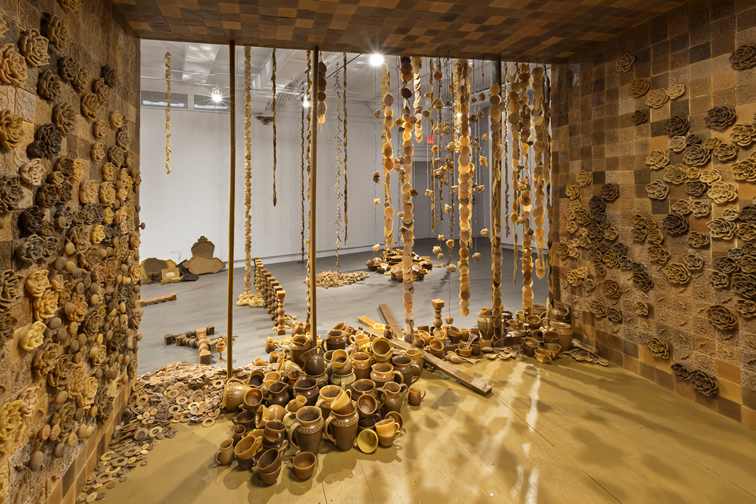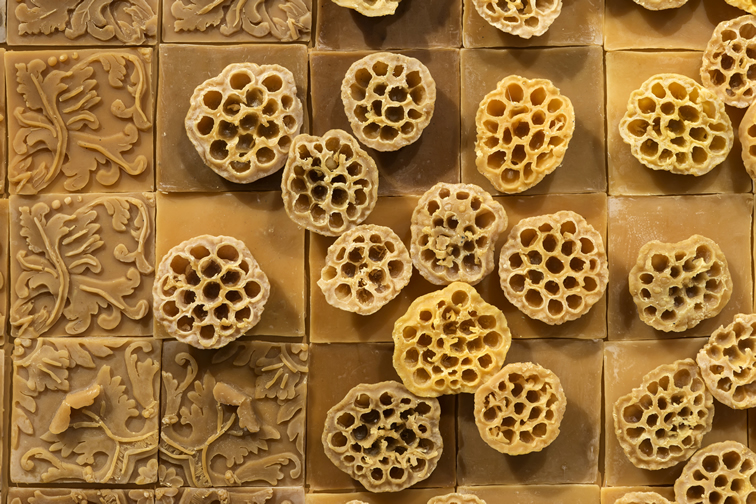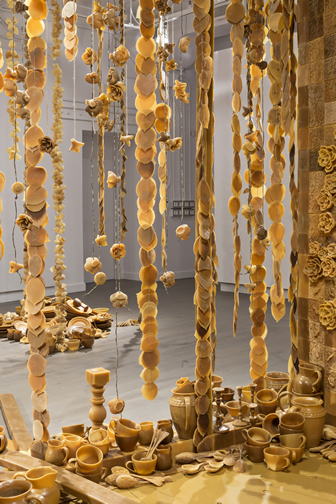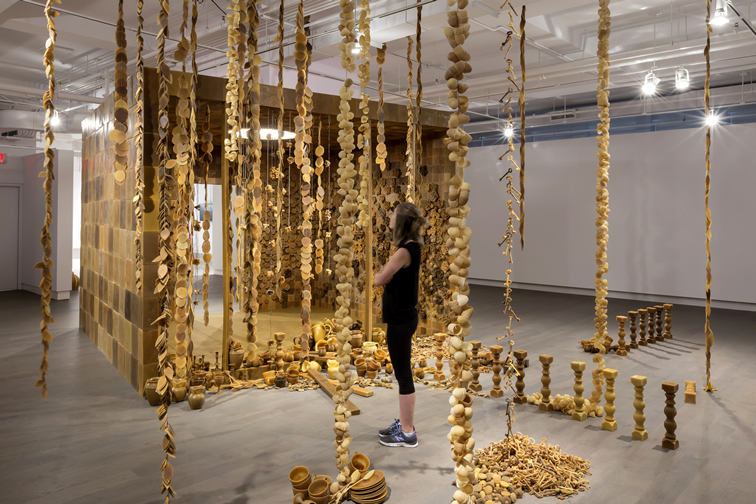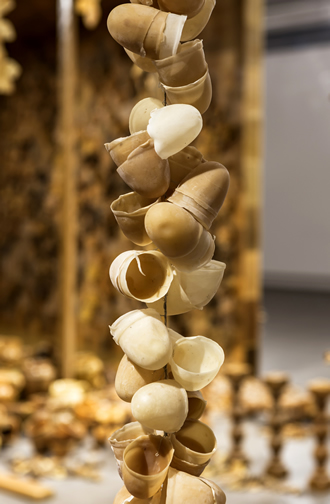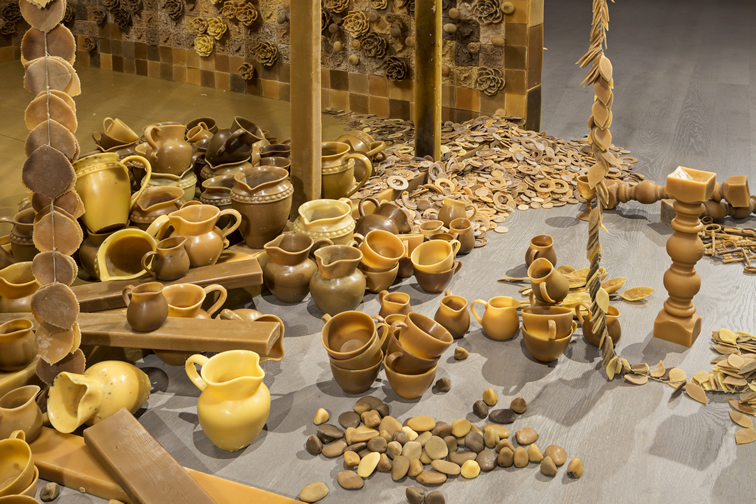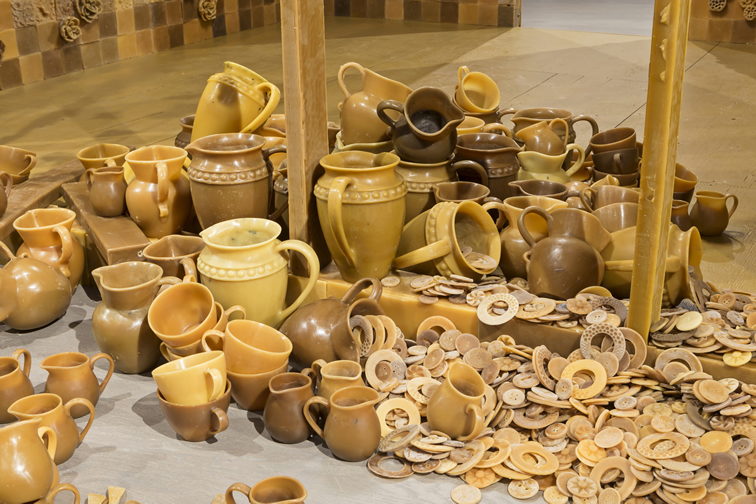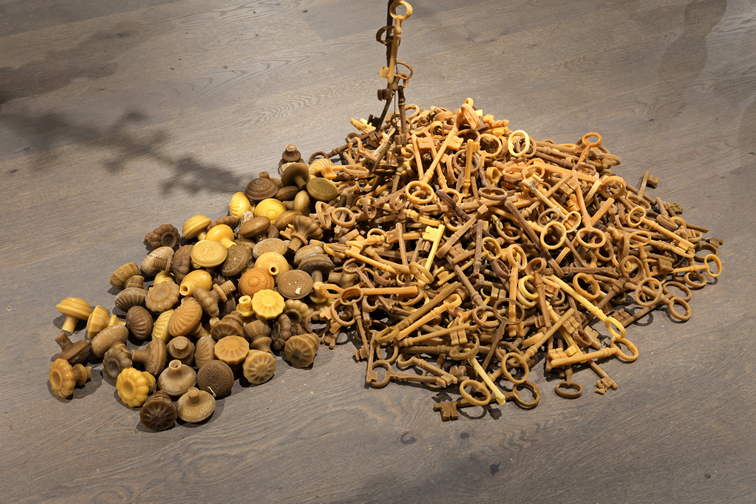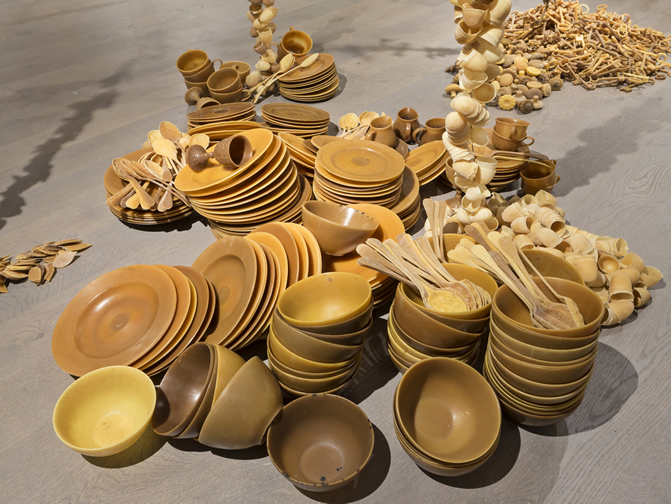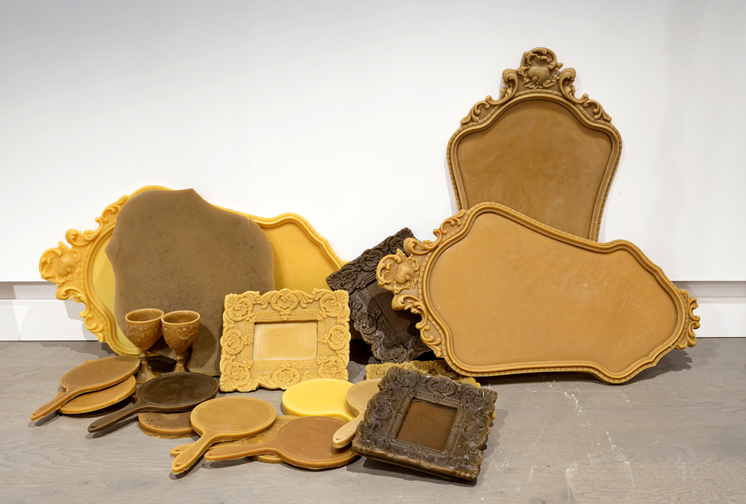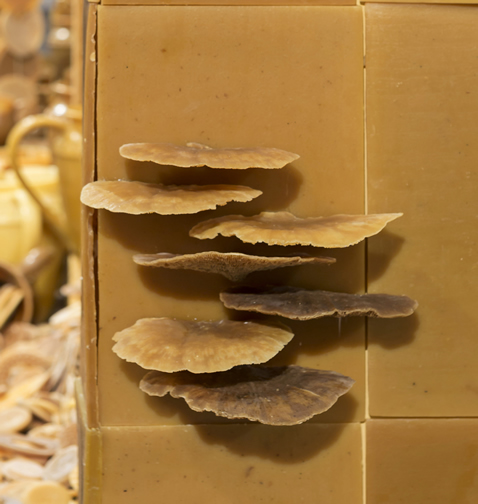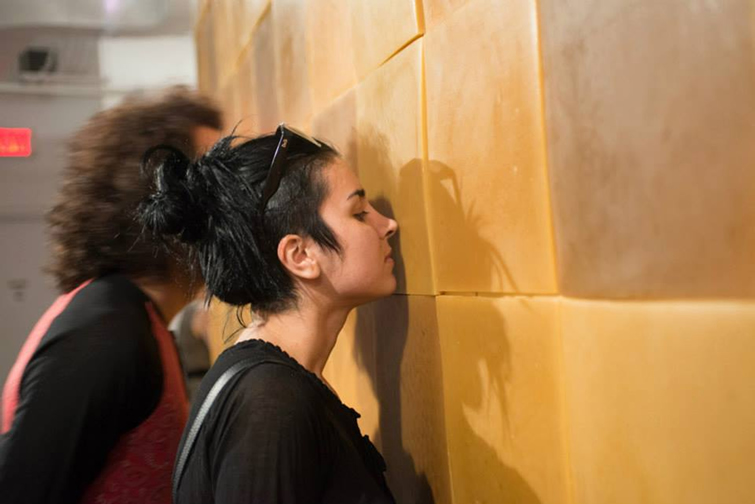Hive- 10fth x 12ft w x12ft d; room scale 30ft x 30ft; 18 bee skeps 18”h 16”w; beeswax cast objects – 95 pitchers, 80 large cups, 20 small cups, 300 large plates, 180 small plates, 80 bowls, 8 2” x 4”’s, 45 various candlesticks, hundreds of buttons, hundreds of pebbles, 50 balusters, 100 spoons, 100’s of small and large skeleton keys, vines from various leaves and objects, 2300 high relief 4.5”tiles, 450 12” tiles, 400 various sized succulents, 300 lotus pods, 30 small fungi, 15 various mirrors, 9 hand mirrors, miscellaneous. All cast in beeswax.
Didactic Panel from the Koffler Gallery
Responsiveness to space and engagement with its particular architecture, setting, history and ideologies are central to Penelope Stewart’s practice. Working across the media of sculpture, installation, photography printmaking and architectural intervention the work offers sensorial encounters, whether by staging large-scale beeswax environments or trompe l’oeil photographs.
For the Koffler Gallery, Stewart created a site specific installation that continues an exploration of the rich metaphoric and historic associations of the beehive as democratic and utopian symbol, particularly for Modernist thinkers. Taking her practice in new directions, she expanded the beeswax work three-dimensionally and transformed the gallery space into an immersive architecture.
Wax-cast bees skeps( man-made straw hives) lead the way to a monumental human scale hive covered in a grid of large tiles. The structure alludes simultaneously to Le Corbusier’s Unite d’Habitation and to the rational beehive box used in apiaries. Other household objects and discarded material frame the direct sightlines towards the centrepiece.
Inside the sculptural beeswax layers overflow the surfaces of the hive in a baroque abundance. Loaded with hybrid forms integrating both floral elements and manufactured objects, a mysterious forensic geology disrupts and extends the interior, causing an outward spill. Beeswax vines hang from the top of the hive and from the ceiling, spreading into the gallery. The dense overgrowth builds up around the exterior, melding with the domestic debris.
Fixed in the mnemonic stillness of beeswax, the scene seems caught between destruction and regeneration, equally instilling a sense of loss and expectation. The luscious excess coalesces into a grand still life – vanitas – a modern ruin reminding us of the life and death cycle, the ephemeral nature of all things, and the fragility of our utopian aspirations of transforming nature through culture.
Mona Filip – Curator of the Koffler Art Gallery, Toronto
Selected Essays – Vanitas – All That Remains

